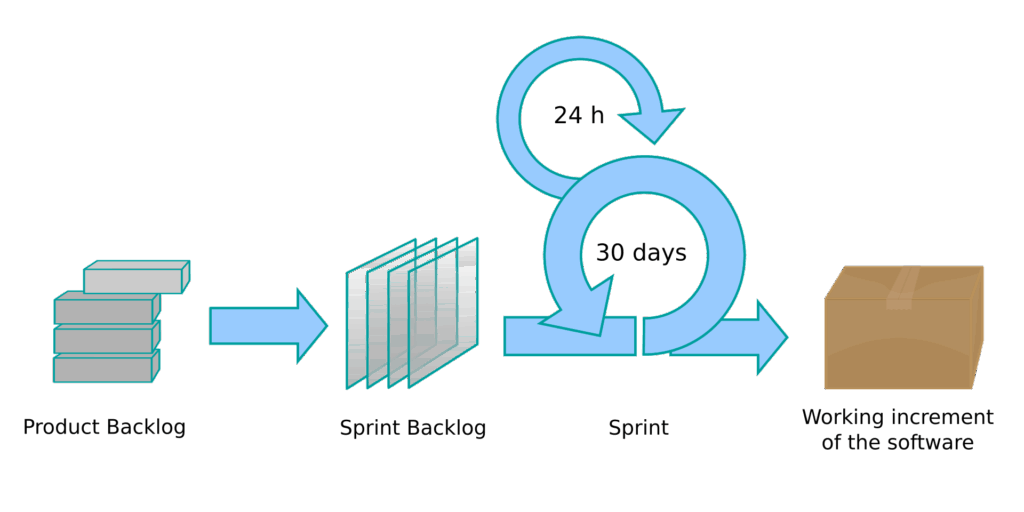Blog #2: Agile Techniques in School Management
Welcome back! Hope you liked the conversations in the earlier Introductory Blog. And thank you for the feedback for the same. You can check out the full series of this @ Agile Pathways in Education – A Blog Series
Let’s get into an area of school that could benefit immensely by adopting Agile Practices – The School Management.
An Effective school management is critical to building an environment for great teaching and learning. Yet, most schools rely on traditional, hierarchical and rigid management systems. The Agile methodologies offer a fresh perspective here for collaborative, transparent, and adaptive school. The NEP (National Education Policy, 2020), though doesn’t call out Agile practices, includes Agility aspects like – student centric learning, continuous feedback and iterative development to name a few.
This makes for a good case to apply agile practices in managing schools. Now, how does one apply the Agile methods – Like in the software world, adopting standard frameworks like – Scrum, Kanban to school management and teaching.
Well, that was easy, but how?
Let’s talk Scrum first – Scrum involves working in sprints (fixed duration iterations) of 2 to 4 weeks, with a planning meeting, daily short check-ins on the plan, and reviews.
Applying this to the school’s planning would mean – Coming up with a full year’s list of items, best known (Backlog), Divvying up the academic year into a few sprints for each term, and validating end of each sprint via Unit tests. A framework like this enables operating in sprints and outcomes that are visible (the working increment as called in the diagram below).
Well, let’s talk with a few examples here.
- The full year list of activities form the Product Backlog.
- Activities like Learning Units for the month, Organizing a School Festival, Running Sports Selections, etc., would be backlog that are pulled into a sprint backlog (current sprint goal).
- Daily check-ins (Stand-up meetings, literally :)) could review progress and also provide help that may be needed to keep it on track. The fact that it happens daily builds better accountability. How do these help?
- Check-ins being focused and short takes away long haul meetings to fix things gone a bit too far to correct.
- Quick and repetitive feedback enables better oversight, as well as provides implementation insights.
- The working increment are the results from the sprint of the month.

By Lakeworks – Own work, CC BY-SA 4.0, https://commons.wikimedia.org/w/index.php?curid=3526338
And now another of the frameworks, the Visual one, and my favourite – Kanban.
Kanban uses visual boards with columns representing process stages, helping teams track tasks and manage workflow. They are called Kanban boards. They could be a physical one or a digital one. And they help staff visualize workloads and pending tasks, ensuring no one is overwhelmed and know where exactly they stand on priority efforts. Here’s an example picture representing the same
Kanban does not fit specifically into Scrum model of work, but is another continuous delivery, in chunks and frequent reviews and course corrections.
Note, this derives from industry era practices and is applied to Software, so, has a longer life story. And coming from Japan, a country known for quality and timeliness makes it a great one to adopt.

By Jennifer Falco – Own work, CC BY 4.0, https://commons.wikimedia.org/w/index.php?curid=132117320
Here’s a quick run-down.
- List down the planned activities, the backlog in one of the tables
- Pull down activities for a window of time (the sprint) and mark them based on status
- Doing – Work in progress
- Review – In review for the work accomplished – could move to done or back to doing based on feedback
- Done – Work complete
This simplified view enables tracking progress visually in simple ways. In a sprint context, reviewing this daily during check-ins helps track regular progress.
Now that we got to these frameworks, let’s look to how these benefit (and what challenges they pose to) the school management efforts.
Key Benefits
- Increased Collaboration Agile practices encourages breaking silos between and promotes regular communication, often missing in schools. Enhanced Transparency Visual tools and frequent updates keep everyone informed, builds trust all stakeholders – staff, leadership, parents and even students. Flexibility By design, Agile embraces change, which suits an environment dealing with policy shifts or unexpected events (e.g., sudden school closures). Accountability Clear task ownership and regular reviews enhance responsibility and follow-through.
Overcoming Challenges
Adopting Agile requires a shift to an open mindset and continuous learning / training. In general, Schools struggle with resistance from ‘old school’ thoughts, accustomed to top-down management. We recommend starting small— running a ‘proof of concept’ Agile in a department or small sets of activities, build confidence and demonstrate benefits and expand wider and deeper in the school.
These blog posts are crafted for Indian educators, school leaders, and stakeholders interested in innovative approaches, using contextual examples to illustrate the practical benefits of Agile in education management and operations.
There are a few examples of schools that have been the early adopters and have applied it in practice. They are are listed here more as a reference, than case studies with a bit of a splattering of our opinion based on what we note in their portals about Agile adoption
Agile Shaala (www.agileshaala.com) in Bangalore – Is an alternative, micro-school that blends learning with experiences, gamified. It puts the Students, Parents and Teachers as one team working toward a common objective – in weekly learning sprints. A lot of this is self-directed learning and assessments are continuous. Real world themes are taken up and subject focused learning sprints ensue learning and a monthly assessment validates learning (like Scrum reviews validate solutions / features). An interesting
SSRVM Borivali West, Mumbai (https://borivaliwest.ssrvm.org) is a CBSE school that has matched the dynamic learning needs with a personalized, interactive learning experience driven by students in an Agile model. The school focuses on Customized, Collaborative and Continuous assessments based learning. The faculty become facilitators (similar to how Project Managers and Leadership of a Software organization are in the IT world).
What underpins this agile learning is the pedagogy that enables concepts based learning, technology enablement and applying curiosity in an experiential learning environment. Irrespective of agile or not, this is a great way to setup school education for our students
The topic for our next episode – Agile Lesson planning, Delivery
What are your thoughts on this? Share your insights and feedback to achyuth@beacon4minds.com / achyuth.coach@gmail.com